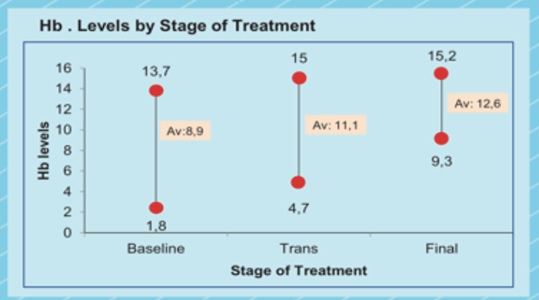Abstract
Introduction: Risks associated with the Allogeneic Blood Transfusions (ABT) are widely known and have contributed to new treatment paradigms for bloodless medicine and surgery. Therefore, it is essential to have effective therapeutic strategies that serve as alternatives to ABTs. This report describes the strategies applied to patients in this paper.
Methods: A Retrospective descriptive study of ABT alternatives used in SOLCA Guayaquil with patients who did not accept ABTs under any circumstances, between 2011 and 2017. The therapeutic strategy was an early diagnosis and an aggressive treatment of anemia and any active bleeding. Erythropoietin, iron, and folate were applied, according to the patient's requirements. All surgical patients received tranexamic acid and other hemostatics as needed.
Results: Of 73 cancer patients, 68.5% were non-surgical, 62% of the group received chemotherapy. For global treatment per patient, up to 3000 mg of iron was administered, 140,000 units of erythropoietin and megadoses of vitamin C were applied with an average of 24 grams. All patients increased their hemoglobin levels by an average of 25 days. All patients increased their hemoglobin levels by an average of 25 days.
Conclusion: It is essential to start early treatment, prevent and coordinate with a multidisciplinary team committed to these schemes. The patients responded well to the medications, and the doses received, and no side effects were reported. We can also see that these strategies are practical and feasible to apply.

This work is licensed under a Creative Commons Attribution-NonCommercial-ShareAlike 4.0 International License.
Copyright (c) 2019 Evelyn Frías Toral, Guido Panchana Eguez, Carlos Marengo Baquerizo, Mario Leone Pignataro, Cesar Chong Loor, Jorge Armijos Vélez, Olivia de La Torre Terranova, Julio Plaza Rubio, Alberto Sánchez Hilbron, Carlos García Cruz, Katty Posligua León, Luis Espin Custodio, Juan Tanca Campozano, Cecilio Zambrano, Guido Panchana Coello


